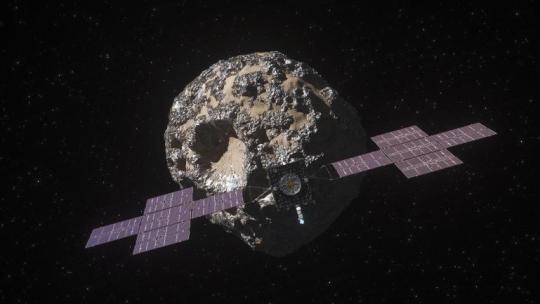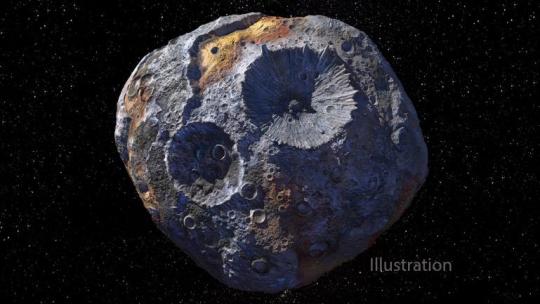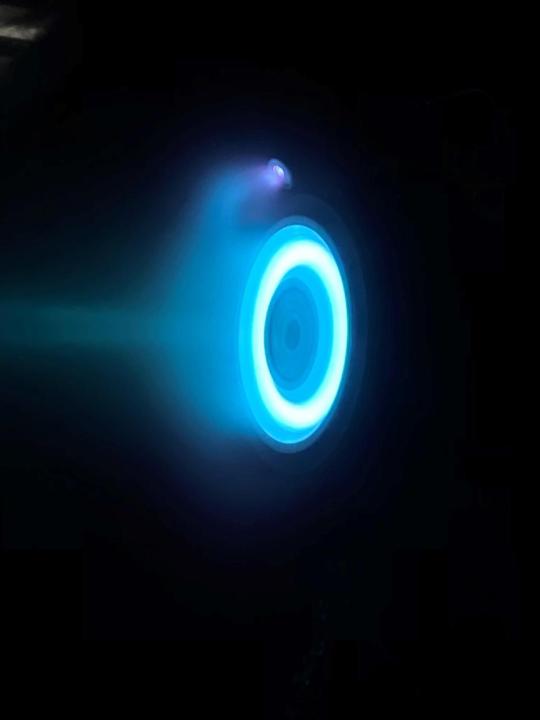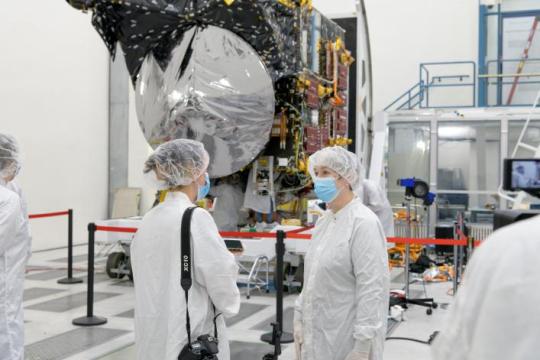#Magnetometer
Explore tagged Tumblr posts
Text
youtube
#necrometerapp#beyondtheveil#Magnetometer#EVP#HauntedLocations#MysteryExploration#SupernaturalEncounters#ITCSession#GhostHunting#SpiritCommunication#ParanormalInvestigation#divination#paranormal#itc#Youtube
2 notes
·
View notes
Text
As usual, I want a magnetometer so much
1 note
·
View note
Text
Vibrating Magnetometer System

Labnic Vibrating Magnetometer System operates at RT with a measuring range of 35×10⁻⁹ to 10³ emu, a magnetic field of 0.2–8T, and frequencies of 55–85 Hz. Features a vibration amplitude of 2–8 mm, a 360° rotating vibration head, and an adjustable pole gap for precise measurements.
0 notes
Text
MPU-6050: Features, Specifications & Important Applications
The MPU-6050 is a popular Inertial Measurement Unit (IMU) sensor module that combines a gyroscope and an accelerometer. It is commonly used in various electronic projects, particularly in applications that require motion sensing or orientation tracking.
Features of MPU-6050
The MPU-6050 is a popular Inertial Measurement Unit (IMU) that combines a 3-axis gyroscope and a 3-axis accelerometer in a single chip.
Here are the key features of the MPU-6050:
Gyroscope:
3-Axis Gyroscope: Measures angular velocity around the X, Y, and Z axes. Provides data on how fast the sensor is rotating in degrees per second (°/s).
Accelerometer:
3-Axis Accelerometer: Measures acceleration along the X, Y, and Z axes. Provides information about changes in velocity and the orientation of the sensor concerning the Earth's gravity.
Digital Motion Processor (DMP):
Integrated DMP: The MPU-6050 features a Digital Motion Processor that offloads complex motion processing tasks from the host microcontroller, reducing the computational load on the main system.
Communication Interface:
I2C (Inter-Integrated Circuit): The MPU-6050 communicates with a microcontroller using the I2C protocol, making it easy to interface with a variety of microcontrollers.
Temperature Sensor:
Onboard Temperature Sensor: The sensor includes an integrated temperature sensor, providing information about the ambient temperature.
Programmable Gyroscope and Accelerometer Range:
Configurable Sensitivity: Users can adjust the full-scale range of the gyroscope and accelerometer to suit their specific application requirements.
Low Power Consumption:
Low Power Operation: Designed for low power consumption, making it suitable for battery-powered and energy-efficient applications.
Read More: MPU-6050
#mpu6050#MPU-6050#IMU#accelerometer#gyroscope#magnetometer#6-axis IMU#inertial measurement unit#motion tracking#orientation sensing#navigation#robotics#drones#wearable devices#IoT#consumer electronics#industrial automation#automotive#aerospace#defense#MPU-6050 features#MPU-6050 specifications#MPU-6050 applications#MPU-6050 datasheet#MPU-6050 tutorial#MPU-6050 library#MPU-6050 programming#MPU-6050 projects
0 notes
Note
I've not asked since I've followed you, but what part of instrument engineering do you do (if you're willing to share)? I tangentially work with a lot of instruments and every time I just ask I get to learn from folks like you
Oh hey! Sorry if this took me a bit to get to, I have no idea how long ago you sent this!
So I do instrument systems engineering, which means a lot of things depending on who you ask, but basically I work on interfaces.
It's helpful to think about the instruments, or "Payload", as separate from the vehicle, or "Spacecraft". The Spacecraft is everything we need in order to get where we're going - so solar panels and batteries, the main computer, thrusters, etc. - and the Payload is what we do when we actually get there.
I'm the interface between the Payload and the Spacecraft. So, I work with the Spacecraft team to make sure the vehicle is providing adequate power to the instruments, has the right command and telemetry protocols, heats and cools the instruments appropriately, and and reacts correctly in the event of faults.
In the other direction, I also work with the instrument teams to make sure the instruments are capable of collecting the data that the project scientists are interested in.
It's a good mix of engineering and science, which is exactly where I want to be! I'm a bit of a jack-of-all-trades, and I enjoy it. I like that I can take bite-sized pieces of areas that people spend full careers becoming experts in. I don't want to be a thermal engineer, or an electrical engineer, or a power engineer or a small-bodies asteroid scientist, but I love that I can work with and learn from all of them!
#asked and answered#What kind of instruments do you work with?#I work with a whole mix!#Kinda wherever they need someone#I've worked with a lot of cameras#but also spectrometers and magnetometers and stuff like that
13 notes
·
View notes
Text
i was assigned to do minutes for a meeting and someone described a situation as "the vibes arent good" and i sat there for a good 30 seconds trying to figure out how to change the wording on that and literally couldnt so thats what i wrote down. hell on earth
2 notes
·
View notes
Text
Magnetometers are precision instruments designed for accurate magnetic field measurement. Widely used in geological surveys, environmental monitoring, archaeological investigations, and buried object detection, these devices provide high sensitivity and reliability. Advanced magnetometer technology enables precise data collection for scientific research, industrial inspections, and drone-based applications, making them essential tools across various industries.https://dynatech.ae/product-category/industrial-and-enterprise/drone-solutions/magnetometers/
#magnetometers#geometric magnetometers#dji drones#aerial photography#dronesolutions#best drone companies
0 notes
Text
#marine survey#bathymetric survey#Hydrographic Survey#ADCP Survey#CTD Survey#Magnetometer survey#Sub Bottom Profiler Survey#Wave measurements#underwater photography#Marine Electric Cable Survey#marine pipeline survey#Backscatter Survey#Offshore pipeline route survey#Sediment sampling survey#situ testing#Near shore reflection seismic survey#Marine Geophysical Survey#MARINE ENVIRONMENTAL SURVEY#Marine Dredging Survey#Side Scan Sonar Survey#Oceanographic Survey#Environmental Baseline Studies#Marine Meteorological Survey
0 notes
Text
Global Fluxgate Magnetometer Market Situation and Forecasting Trends Analysis 2024 - 2031
The global fluxgate magnetometer market is witnessing steady growth, driven by the increasing demand for precise magnetic field measurement in various applications, including geophysical surveys, environmental monitoring, and defense. This article provides a comprehensive analysis of the market dynamics, key trends, competitive landscape, and future outlook for fluxgate magnetometers.

Introduction to Fluxgate Magnetometers
Fluxgate magnetometers are sensitive instruments designed to measure the strength and direction of magnetic fields. They operate on the principle of magnetic induction and are known for their high accuracy and stability. These devices are widely used in applications such as geological exploration, aerospace, and military operations, where precise magnetic measurements are essential.
The global fluxgate magnetometer market presents considerable opportunities driven by increasing demand for precise magnetic field measurements and the expansion of key industries.
Market Overview
Current Market Size and Growth
As of 2023, the global fluxgate magnetometer market is valued at approximately $XX million, with projections to reach $XX million by 2030, growing at a CAGR of XX% during the forecast period. This growth is attributed to the expanding applications of fluxgate magnetometers across various industries and advancements in technology.
Key Market Drivers
Increasing Demand for Geological Surveys: The mining and oil exploration industries are driving the demand for fluxgate magnetometers, as these instruments provide critical data for resource identification and evaluation.
Technological Advancements: Innovations in sensor technology and miniaturization are enhancing the performance and applicability of fluxgate magnetometers, making them more attractive to users.
Environmental Monitoring Needs: Growing concerns regarding environmental changes and the need for magnetic field monitoring in various ecosystems are contributing to market growth.
Challenges in the Market
Despite its growth potential, the fluxgate magnetometer market faces several challenges:
High Costs: The initial investment for high-quality fluxgate magnetometers can be significant, which may limit adoption among smaller enterprises and researchers.
Competition from Alternative Technologies: The presence of alternative magnetic measurement technologies, such as superconducting quantum interference devices (SQUIDs), can pose a competitive challenge to fluxgate magnetometers.
Types of Fluxgate Magnetometers
1. Single-Axis Fluxgate Magnetometers
Single-axis fluxgate magnetometers measure magnetic fields along one axis and are typically used in applications requiring basic magnetic measurements, such as environmental monitoring and educational purposes.
2. Three-Axis Fluxgate Magnetometers
Three-axis fluxgate magnetometers measure magnetic fields along three orthogonal axes, providing a comprehensive magnetic field profile. These are commonly used in geophysical surveys, aerospace applications, and military operations.
3. Portable Fluxgate Magnetometers
Portable fluxgate magnetometers are designed for field applications and are lightweight and easy to use. They are widely employed in geological surveys and environmental studies where mobility is essential.
Regional Analysis
North America
North America holds a significant share of the global fluxgate magnetometer market, driven by strong demand from the defense and aerospace sectors. The United States is the largest market, with ongoing investments in geophysical research and environmental monitoring.
Europe
Europe is witnessing steady growth in the fluxgate magnetometer market, supported by increasing research and development activities in geophysics and environmental sciences. Countries such as Germany, France, and the UK are key contributors to market expansion.
Asia-Pacific
The Asia-Pacific region is expected to experience significant growth, fueled by rapid industrialization and increasing investments in mining and resource exploration. Countries like China and Australia are driving demand for fluxgate magnetometers in various applications.
Latin America and Middle East & Africa
The market in Latin America and the Middle East & Africa is gradually developing, with growing awareness of the importance of geophysical studies and environmental monitoring. The expansion of mining and oil exploration activities in these regions is propelling demand for fluxgate magnetometers.
Competitive Landscape
Key Players
Honeywell International Inc.
Magnetometrie
Nikon Metrology, Inc.
Bartington Instruments Ltd.
Geometrics Inc.
These companies focus on product innovation, quality enhancements, and expanding their distribution networks to capture a larger market share.
Market Strategies
Research and Development: Companies are investing in R&D to enhance the performance and capabilities of fluxgate magnetometers, making them suitable for a broader range of applications.
Strategic Partnerships: Collaborations with academic institutions and research organizations help manufacturers understand market needs and develop tailored solutions.
Future Outlook
The global fluxgate magnetometer market is poised for substantial growth in the coming years. As industries continue to prioritize accurate magnetic measurements for various applications, the demand for fluxgate magnetometers is expected to rise. Additionally, advancements in technology will likely lead to the development of more sophisticated and versatile instruments.
Conclusion
The global fluxgate magnetometer market presents considerable opportunities driven by increasing demand for precise magnetic field measurements and the expansion of key industries. While challenges such as high costs and competition from alternative technologies exist, the overall outlook remains positive. Stakeholders in the industry should focus on innovation and customer engagement to thrive in this dynamic market.
#Global Fluxgate Magnetometer Market Size#Global Fluxgate Magnetometer Market Trend#Global Fluxgate Magnetometer Market Growth
0 notes
Video
GOES-U Launches to Space by NASA on The Commons Via Flickr: A SpaceX Falcon Heavy rocket carrying the National Oceanic and Atmospheric Administration (NOAA) GOES-U (Geostationary Operational Environmental Satellite U) lifts off from Launch Complex 39A at NASA’s Kennedy Space Center in Florida on Tuesday, June 25, 2024. The GOES-U satellite is the final satellite in the GOES-R series, which serves a critical role in providing continuous coverage of the Western Hemisphere, including monitoring tropical systems in the eastern Pacific and Atlantic oceans. On board GOES-U is a suite of seven instruments for collecting advanced imagery and atmospheric measurements, providing real-time mapping of lightning activity, and detecting approaching space weather hazards. Also onboard for the first time is the compact coronagraph that will observe the Sun’s outermost layer, called the corona, for large explosions of plasma that could produce geomagnetic solar storms. NASA Media Usage Guidelines Credit: NASA/SpaceX Image Number: KSC-20240625-PH-SPX01_0016 Date: June 25, 2024
#NASA#KSC#Kennedy Space Center#LSP#Launch Services Program#GOES-U#Geostationary Operational Environmental Satellite#spacecraft#weather satellite#GSFC#NOAA#National Oceanic and Atmospheric Administration#Advanced Baseline Imager#Magnetometer instrument#SpaceX#Falcon Heavy rocket#Lockheed Martin#L3Harris Technologies#flickr
0 notes
Text
Solid State Quantum MagnetometersSeeking out water worlds from the quantum world
“Follow the water!” The solar system is full of water in different states, from the Sun’s water vapor to the ice of Pluto and beyond. Water is not only linked to the possibility to sustain life, it is also interesting for its own geological properties and potential uses. For example, ice on the Moon and Mars could support human exploration. Comets that hit Earth may have deposited water on our planet. The icy comets and rings of Saturn reveal how solar systems change over time. from NASA https://ift.tt/HFcznDG
#NASA#space#Solid State Quantum Magnetometers—Seeking out water worlds from the quantum world#Michael Gabrill
0 notes
Text
youtube
Melexis: Triaxis magnetometer for cost-effective battery powered applications (MLX90397)
https://www.futureelectronics.com/m/melexis . The Melexis MLX90397 is a 3D magnetometer designed for position sensor applications with a +/-50 mT range with an adaptive range on BZ of +/-200 mT. It makes it ideal for battery-powered applications. https://youtu.be/wC4SEcicffg
#Melexis Triaxis magnetometer#MLX90397#Melexis MLX90397#3D magnetometer#position sensor#battery-powered applications#Triaxis magnetometer#Melexis 3D magnetometer#Melexis position sensor#Melexis#Youtube
0 notes
Text

Magnetometer Geology
Every kind of mineral exhibits a unique magnetic susceptibility. This means different geological units below the ground can cause local disturbances within the magnetic field. For more, please visit the website https://cxsltd.com/services/geophysics/magnetometer/
0 notes
Text

Let's Explore a Metal-Rich Asteroid 🤘
Between Mars and Jupiter, there lies a unique, metal-rich asteroid named Psyche. Psyche’s special because it looks like it is part or all of the metallic interior of a planetesimal—an early planetary building block of our solar system. For the first time, we have the chance to visit a planetary core and possibly learn more about the turbulent history that created terrestrial planets.
Here are six things to know about the mission that’s a journey into the past: Psyche.

1. Psyche could help us learn more about the origins of our solar system.
After studying data from Earth-based radar and optical telescopes, scientists believe that Psyche collided with other large bodies in space and lost its outer rocky shell. This leads scientists to think that Psyche could have a metal-rich interior, which is a building block of a rocky planet. Since we can’t pierce the core of rocky planets like Mercury, Venus, Mars, and our home planet, Earth, Psyche offers us a window into how other planets are formed.

2. Psyche might be different than other objects in the solar system.
Rocks on Mars, Mercury, Venus, and Earth contain iron oxides. From afar, Psyche doesn’t seem to feature these chemical compounds, so it might have a different history of formation than other planets.
If the Psyche asteroid is leftover material from a planetary formation, scientists are excited to learn about the similarities and differences from other rocky planets. The asteroid might instead prove to be a never-before-seen solar system object. Either way, we’re prepared for the possibility of the unexpected!

3. Three science instruments and a gravity science investigation will be aboard the spacecraft.
The three instruments aboard will be a magnetometer, a gamma-ray and neutron spectrometer, and a multispectral imager. Here’s what each of them will do:
Magnetometer: Detect evidence of a magnetic field, which will tell us whether the asteroid formed from a planetary body
Gamma-ray and neutron spectrometer: Help us figure out what chemical elements Psyche is made of, and how it was formed
Multispectral imager: Gather and share information about the topography and mineral composition of Psyche
The gravity science investigation will allow scientists to determine the asteroid’s rotation, mass, and gravity field and to gain insight into the interior by analyzing the radio waves it communicates with. Then, scientists can measure how Psyche affects the spacecraft’s orbit.

4. The Psyche spacecraft will use a super-efficient propulsion system.
Psyche’s solar electric propulsion system harnesses energy from large solar arrays that convert sunlight into electricity, creating thrust. For the first time ever, we will be using Hall-effect thrusters in deep space.

5. This mission runs on collaboration.
To make this mission happen, we work together with universities, and industry and NASA to draw in resources and expertise.
NASA’s Jet Propulsion Laboratory manages the mission and is responsible for system engineering, integration, and mission operations, while NASA’s Kennedy Space Center’s Launch Services Program manages launch operations and procured the SpaceX Falcon Heavy rocket.
Working with Arizona State University (ASU) offers opportunities for students to train as future instrument or mission leads. Mission leader and Principal Investigator Lindy Elkins-Tanton is also based at ASU.
Finally, Maxar Technologies is a key commercial participant and delivered the main body of the spacecraft, as well as most of its engineering hardware systems.

6. You can be a part of the journey.
Everyone can find activities to get involved on the mission’s webpage. There's an annual internship to interpret the mission, capstone courses for undergraduate projects, and age-appropriate lessons, craft projects, and videos.
You can join us for a virtual launch experience, and, of course, you can watch the launch with us on Oct. 12, 2023, at 10:16 a.m. EDT!
For official news on the mission, follow us on social media and check out NASA’s and ASU’s Psyche websites.
Make sure to follow us on Tumblr for your regular dose of space!
#Psyche#Mission to Psyche#asteroid#NASA#exploration#technology#tech#spaceblr#solar system#space#not exactly#metalcore#but close?
2K notes
·
View notes
Text
Io's Missing Magma Ocean

In the late 1970s, scientists conjectured that Io was likely a volcanic world, heated by tidal forces from Jupiter that squeeze it along its elliptical orbit. Only months later, images from Voyager 1's flyby confirmed the moon's volcanism. Magnetometer data from Galileo's later flyby suggested that tidal heating had created a shallow magma ocean that powered the moon's volcanic activity. But newly analyzed data from Juno's flyby shows that Io doesn't have a magma ocean after all. (Image credit: NASA/JPL/USGS; research credit: R. Park et al.; see also Quanta) Read the full article
#fluid dynamics#geophysics#Io#magma#physics#planetary science#science#subsurface oceans#tidal heating#volcano
57 notes
·
View notes
